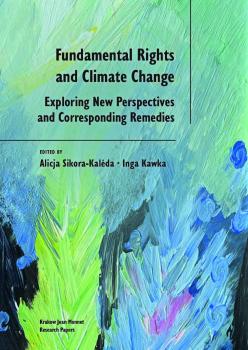Climate-Induced Migration, a Dangerous Legal Gap in European Asylum Law .......... 263
Synopsis
Climate-induced migration is a contemporary phenomenon that is likely to become massive in the years to come, with up to a billion migrants by 2050 according to some specialists. Nowadays, international displacement is excluded from any refugee definition due to the general and indiscriminate nature of the impacts resulting from climate change. Recent developments in Human rights may suggest an application of the principle of non-refoulement on the basis of the right to life. However, it is argued that such a development would trap climate migrants between the impossibility of obtaining an adequate international protection and their protection against any kind of refoulement.
This chapter will therefore introduce the decisions of the United Nations Human Rights Committee in relation to climate change-induced and propose an analysis of the reception of the method set out by the UN Committee, using selected examples of cases from European national courts. Indeed, a new extensive interpretation of Article 19 of the EU Charter of Fundamental Rights (non-refoulement) in order to avoid the violation of the fundamental rights of non-EU citizens – namely the right to life (Art. 2), the right to the integrity of the person (Art. 3) or the respect of private and family life (Art. 7) – would allow the recognition of a principle of non-removal to such displaced persons in the European framework.
Scholars studying the subject focus mainly on the adoption of a new international convention, which appears not only necessary but urgent. However, in the meantime, an extensive interpretation of Article 19 of the Charter might fill the gap. Therefore, this paper will propose the development of an ambitious and modern reading of the Charter of Fundamental Rights while launching the elaboration and adoption of proper European legislation.





